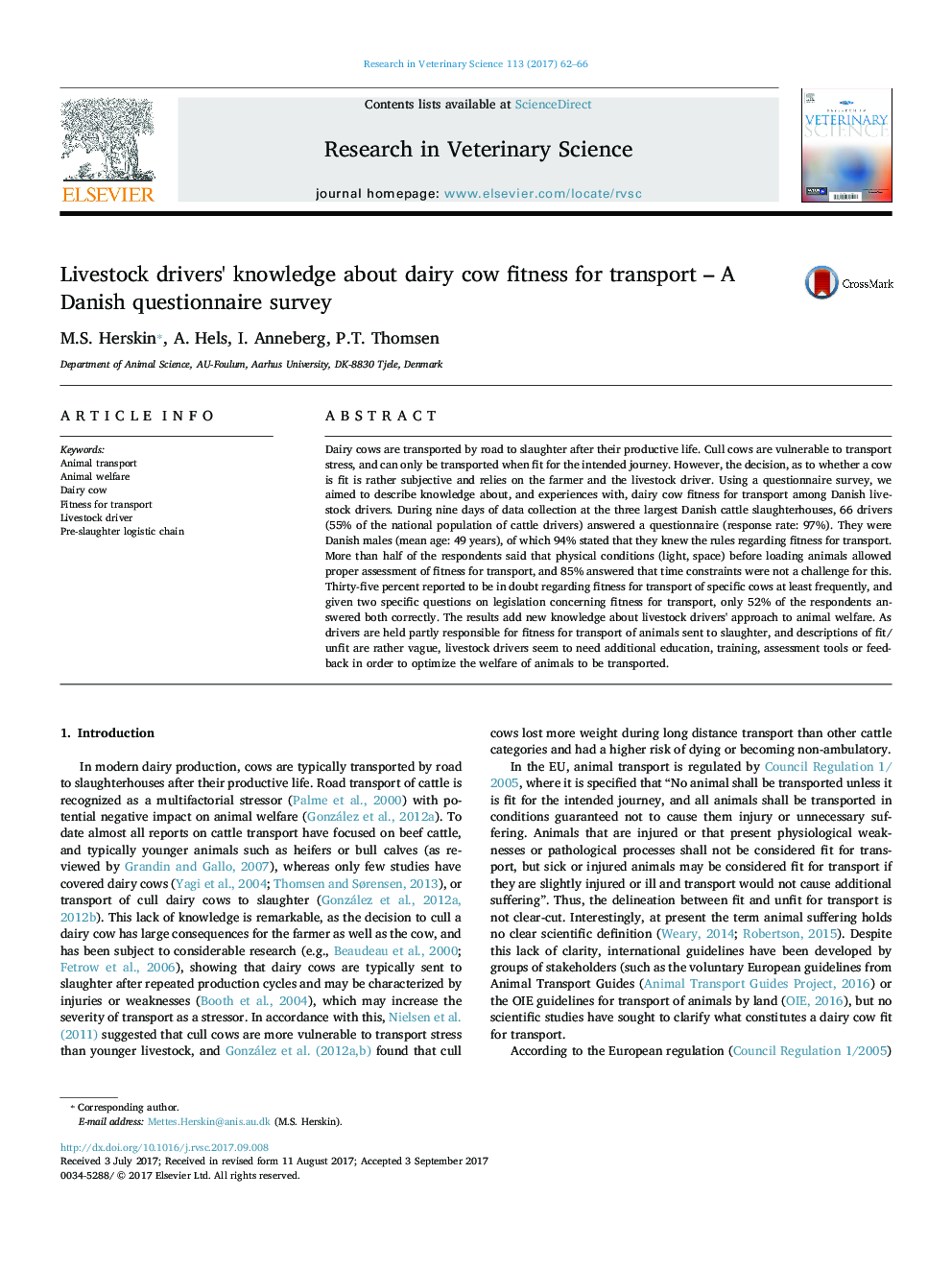| Article ID | Journal | Published Year | Pages | File Type |
|---|---|---|---|---|
| 5543969 | Research in Veterinary Science | 2017 | 5 Pages |
â¢Livestock drivers are an important link in the pre-slaughter logistic chain, but has received little scientific attentionâ¢Assessment of fitness for transport in cull production animals is one part of a livestock driver's jobâ¢These results are based on a questionnaire survey answered by more than 50% of Danish livestock driversâ¢Among the respondents 48% could not correctly answer 2 specific questions regarding current legislation, and doubt regarding fitness for transport of dairy cows was not uncommon.â¢The results call for further focus on the education, training and available assessment tools for livestock drivers.
Dairy cows are transported by road to slaughter after their productive life. Cull cows are vulnerable to transport stress, and can only be transported when fit for the intended journey. However, the decision, as to whether a cow is fit is rather subjective and relies on the farmer and the livestock driver. Using a questionnaire survey, we aimed to describe knowledge about, and experiences with, dairy cow fitness for transport among Danish livestock drivers. During nine days of data collection at the three largest Danish cattle slaughterhouses, 66 drivers (55% of the national population of cattle drivers) answered a questionnaire (response rate: 97%). They were Danish males (mean age: 49Â years), of which 94% stated that they knew the rules regarding fitness for transport. More than half of the respondents said that physical conditions (light, space) before loading animals allowed proper assessment of fitness for transport, and 85% answered that time constraints were not a challenge for this. Thirty-five percent reported to be in doubt regarding fitness for transport of specific cows at least frequently, and given two specific questions on legislation concerning fitness for transport, only 52% of the respondents answered both correctly. The results add new knowledge about livestock drivers' approach to animal welfare. As drivers are held partly responsible for fitness for transport of animals sent to slaughter, and descriptions of fit/unfit are rather vague, livestock drivers seem to need additional education, training, assessment tools or feedback in order to optimize the welfare of animals to be transported.
